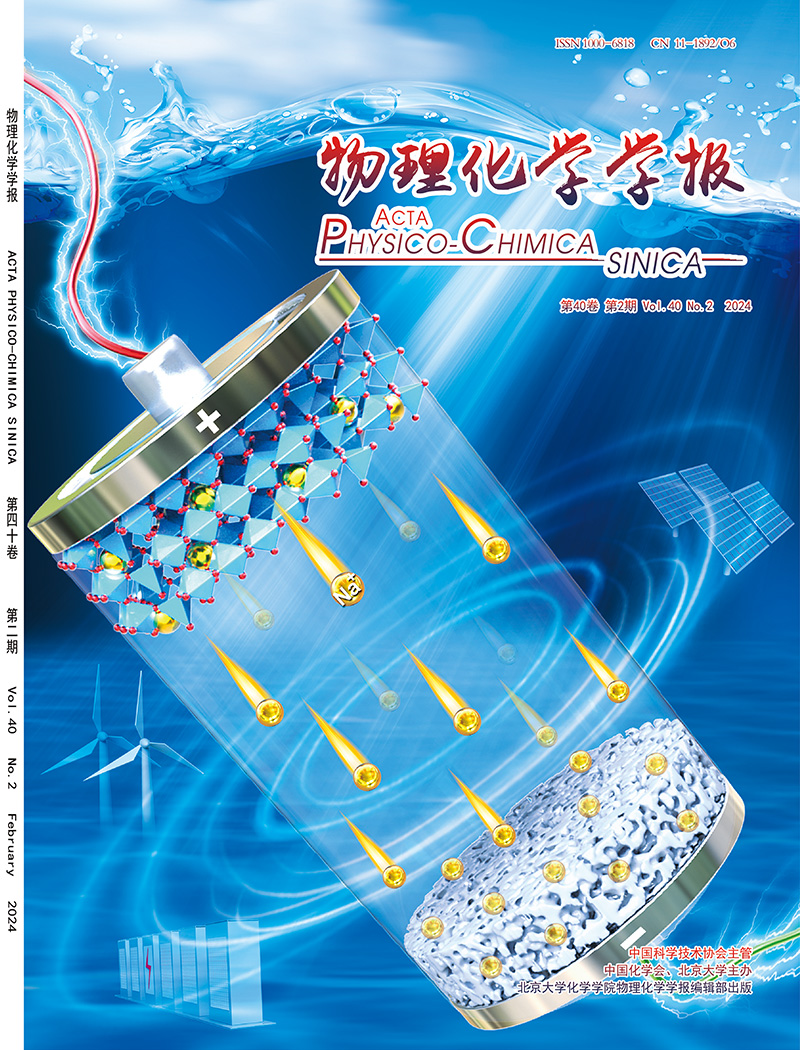Effect of interlayer anions in layered double hydroxides on the photothermocatalytic CO2 methanation of derived Ni–Al2O3 catalysts
IF 13.5
2区 化学
Q1 CHEMISTRY, PHYSICAL
引用次数: 0
Abstract
The concentration of carbon dioxide (CO2) in the atmosphere is progressively increasing due to industrial development, leading to environmental concerns such as the greenhouse effect. Consequently, it is crucial to decrease dependence on the fossil fuels and mitigate the CO2 emissions. Photothermocatalysis technology facilitates the conversion of light energy into heat energy on the surface of catalysts, thereby driving chemical reactions. This catalytic approach effectively harnesses ample solar energy, consequently reducing non-renewable energy consumption. Solar-driven CO2 methanation is an important route to simultaneously mitigate excessive carbon emissions and produce fuels. Layered double hydroxides (LDH) can be reduced at high temperature in a reductive atmosphere of a hydrogen/argon (H2/Ar) mixture to prepare metal-loaded oxide (MO) catalysts, which are widely used in CO2 hydrogenation reactions as excellent photothermal catalysts. However, there is limited study on how the interlayer anion type of LDH affects the activity of CO2 methanation. Herein, a series of LDH precursors, intercalated with various anions, were synthesized using a co-precipitation method. The LDH precursors were reduced in a H2/Ar atmosphere to acquire a group of nickel (Ni) loaded on alumina (Al2O3) catalysts, referred to as NiAl-x-MO (x = CO3, NO3, Cl, and SO4, which represents carbonate, nitrate, chloride, and sulfate anions, respectively). Energy dispersive spectrometer (EDS) elemental mapping and X-ray photoelectron spectroscopy (XPS) results revealed the presence of nitrogen (N), chlorine (Cl), and sulfur (S) species on the surfaces of NiAl–NO3-MO, NiAl–Cl-MO, and NiAl–SO4-MO catalysts, respectively. Photothermocatalytic tests were conducted on the catalysts to assess the potential influence of the residual species on CO2 methanation. Among them, the NiAl–CO3-MO catalyst demonstrated a CO2 conversion of 50.1 %, methane (CH4) selectivity of 99.9 %, along with a CH4 production rate of 94.4 mmol g−1 h−1. The performance of the NiAl–NO3-MO catalyst was found to be comparable to that of the NiAl–CO3-MO catalyst. In contrast, the CO2 methanation activity of the NiAl–Cl-MO and NiAl–SO4-MO catalysts were negligible. CO2 temperature programmed desorption (CO2-TPD) analysis demonstrated that the presence of N, Cl, and S species had a negligible effect on the adsorption of CO2. H2 temperature programmed desorption (H2-TPD) and density functional theory (DFT) results suggested that the strong coordination bond between residual Cl or S species and metallic Ni impeded the absorption and activation of H2, which was responsible for the low CO2 conversion. Hence, the significant role of the interlayer anion in LDH should be preferentially considered when designing LDH-derived catalysts, especially the Ni-based catalysts for hydrogenation reactions.

层状双氢氧化物层间阴离子对衍生Ni-Al2O3催化剂光热催化CO2甲烷化的影响
由于工业发展,大气中二氧化碳的浓度正在逐步增加,导致了诸如温室效应等环境问题。因此,减少对化石燃料的依赖和减少二氧化碳的排放至关重要。光热催化技术是将光能在催化剂表面转化为热能,从而驱动化学反应的技术。这种催化方法有效地利用了充足的太阳能,从而减少了不可再生能源的消耗。太阳能驱动的二氧化碳甲烷化是同时减少过量碳排放和生产燃料的重要途径。层状双氢氧化物(LDH)可以在氢/氩(H2/Ar)混合物的还原气氛中高温还原,制备负载金属氧化物(MO)催化剂,作为优异的光热催化剂广泛应用于CO2加氢反应。然而,关于层间阴离子型LDH如何影响CO2甲烷化活性的研究有限。本文采用共沉淀法合成了一系列嵌入不同阴离子的LDH前体。LDH前驱体在H2/Ar气氛下还原得到一组负载在氧化铝(Al2O3)催化剂上的镍(Ni),称为NiAl-x-MO (x = CO3, NO3, Cl和SO4,分别代表碳酸盐,硝酸盐,氯化物和硫酸盐阴离子)。能谱分析(EDS)和x射线光电子能谱分析(XPS)结果表明,NiAl-NO3-MO、NiAl-Cl-MO和NiAl-SO4-MO催化剂表面分别存在氮(N)、氯(Cl)和硫(S)。对催化剂进行了光热催化试验,以评估剩余组分对CO2甲烷化的潜在影响。其中,NiAl-CO3-MO催化剂的CO2转化率为50.1%,甲烷(CH4)选择性为99.9%,CH4产率为94.4 mmol g−1 h−1。结果表明,NiAl-NO3-MO催化剂的性能与NiAl-CO3-MO催化剂相当。相比之下,ni - cl - mo和ni - so4 - mo催化剂的CO2甲烷化活性可以忽略不计。CO2程序升温解吸(CO2- tpd)分析表明,N、Cl和S的存在对CO2吸附的影响可以忽略不计。H2程序升温解吸(H2- tpd)和密度泛函理论(DFT)结果表明,残余Cl或S与金属Ni之间的强配位键阻碍了H2的吸收和活化,这是导致CO2转化率低的原因。因此,在设计LDH衍生催化剂,特别是用于加氢反应的ni基催化剂时,应优先考虑层间阴离子在LDH中的重要作用。
本文章由计算机程序翻译,如有差异,请以英文原文为准。
求助全文
约1分钟内获得全文
求助全文

 求助内容:
求助内容: 应助结果提醒方式:
应助结果提醒方式:


